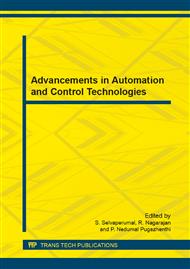p.519
p.523
p.529
p.537
p.543
p.549
p.556
p.560
p.565
Sensor Data Hiding Based on Image Watermarking Using Interpolation Technique over Inter-Packet Delays
Abstract:
Large number of application areas, like location-based services, transaction logs, sensor networks are qualified by uninterrupted data stream from many. Sensor data handling of continuous data needs to cover various issues, admitting the storage efficiency, processing throughput, bandwidth conception and secure transmission. This paper addresses the challenges by providing secure and efficient transmission of sensor data by embedding it over the inter-packet delays (IPDs). The embedding of sensor data within a host medium makes this technique reminiscent of watermarking. Interpolation technique is used to hide the sensor data into an image which is send to another node. By enforcing linear enlargement to interpolation-errors, a extremely effective reversible watermarking scheme is achieved, which can ensure high image quality without sacrificing embedding capacity. Time-Based flow watermarking technique is proposed, that avoids data degradation due to traditional watermarking. Sensor data is extracted effectively based on the inter-packet delays that minimizes the probability of decoding error. The outcome of the observation depicts that this system is scalable and highly resilient in sensor data.
Info:
Periodical:
Pages:
543-548
Citation:
Online since:
June 2014
Authors:
Price:
Сopyright:
© 2014 Trans Tech Publications Ltd. All Rights Reserved
Share:
Citation:


